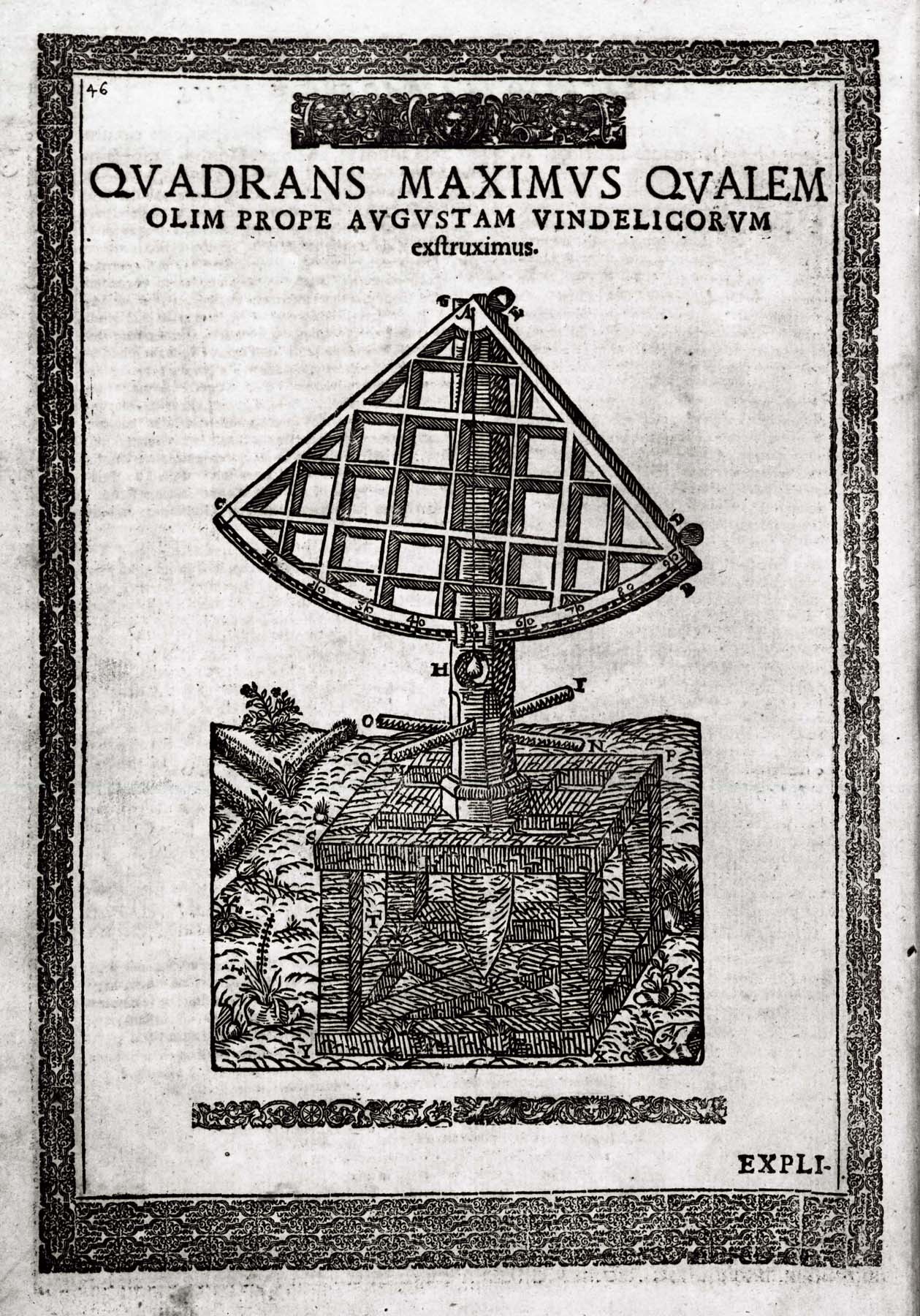The instruments of Tycho Brahe
The great Danish astronomer Tycho Brahe (1546-1601) significantly improved the existing astronomical instruments and invented new ones. They allowed measuring the position of the stars with a precision of about 2 arc minutes at best, against nearly a degree previously. Comets were identified without instruments, but Tycho Brahe could then measure their precise position relative to nearby stars. Thus he was able to establish for the first time, on comet C/1577 V1, that comets are more distant than the Moon.

Quart de cercle de Tycho Brahe, d’après son Astronomiae instauratae mechanica, 1598.
Crédit : Observatoire de ParisThe observation of comets in the 17th and 18th centuries
Telescopes emerged in the early 17th century, but they were totally unsuited to the search for comets, which was always done with the naked eye. The telescopes were very long, hence cumbersome, lacked luminosity and their field was small. However, once a comet was discovered, one had to measure its position. A quadrant, derived from Tycho Brahe’s quadrans maximus but improved with one or two telescopes, was used for this. It was by far the astronomical and geodetic instrument most used during the two centuries.
However, the appearance in the 18th century of the mirror telescope and of the achromatic telescope changed the situation: these instruments, easy to use and with a large enough field, could be used to search for comets, as done by the great comet discoverers like Messier, Pons or Caroline Herschel. The position of comets was still measured with a quadrant, now often equipped with a divided azimuth circle.
The observation of comets in the 19th century
In the 19th century, the search for comets was still done with the naked eye or with small reflecting or refracting telescopes. One also used binoculars, invented in the 17th century but finally made practical. And a specialized instrument came along: the comet finder, which allowed the astronomer to explore the entire sky without changing his place. It seems however that this instrument had not had the expected success.
To measure the position of comets, one no longer used the quadrant of the previous century, but new instruments, such as the mural circle. Another interesting, but apparently unique realization, was the equatorial built by Henry Prudence Gambey (1787-1847) for the Paris Observatory.
The physical study of comets began in the 19th century. The first instrument used for this purpose was Arago’s polarimeter, with which he had discovered the polarization of the light of comets, showing that it is essentially diffused sunlight.
The spectroscopy of comets was now possible. Visual, then photographic spectroscopes were fixed at the focus of reflecting or refracting telescopes.
The observation of comets from the 20th century to today
Astronomical photography began to spread among professional astronomers in the last decades of the 19th century, and a little later among amateurs. It made possible the discovery and observation of comets by photography, especially when wide-field optical devices were built, either with lenses or with mirrors like the one invented by Bernhard Schmidt (1879-1935) in 1930. But professionals and amateurs (often very well equipped) continue to use more or less powerful binoculars and small reflecting of refracting telescopes, now often equipped with CCD cameras. There are also programs for systematic imaging of the sky by robotic telescopes, which enable many discoveries of comets and asteroids. They provide the position of comets compared to the stars of the field simultaneously.

La comète Bennett photographiée le 1er avril 1970 à l’Observatoire de Haute-Provence.
Crédit : Observatoire de Haute-Provence / CNRS















